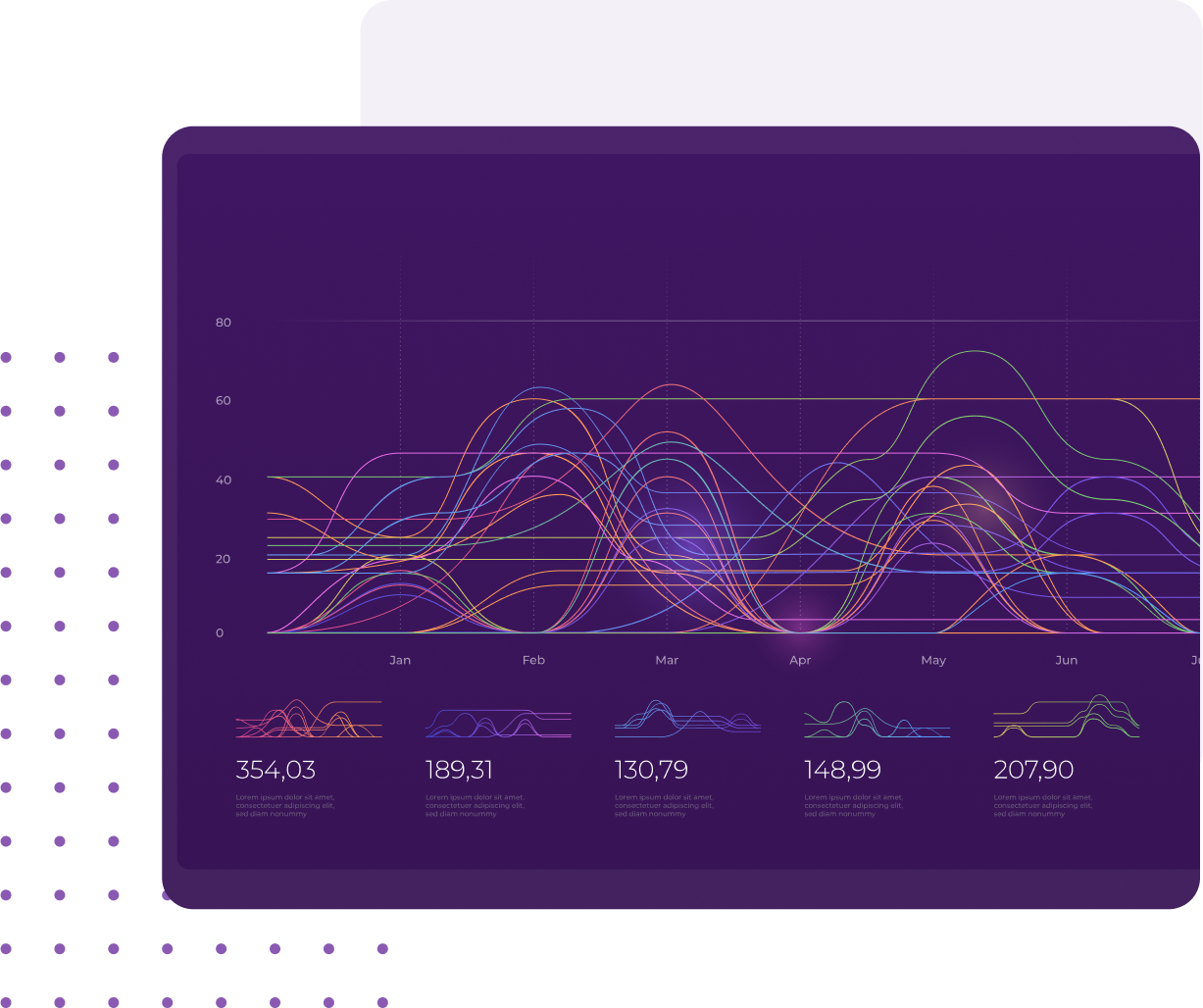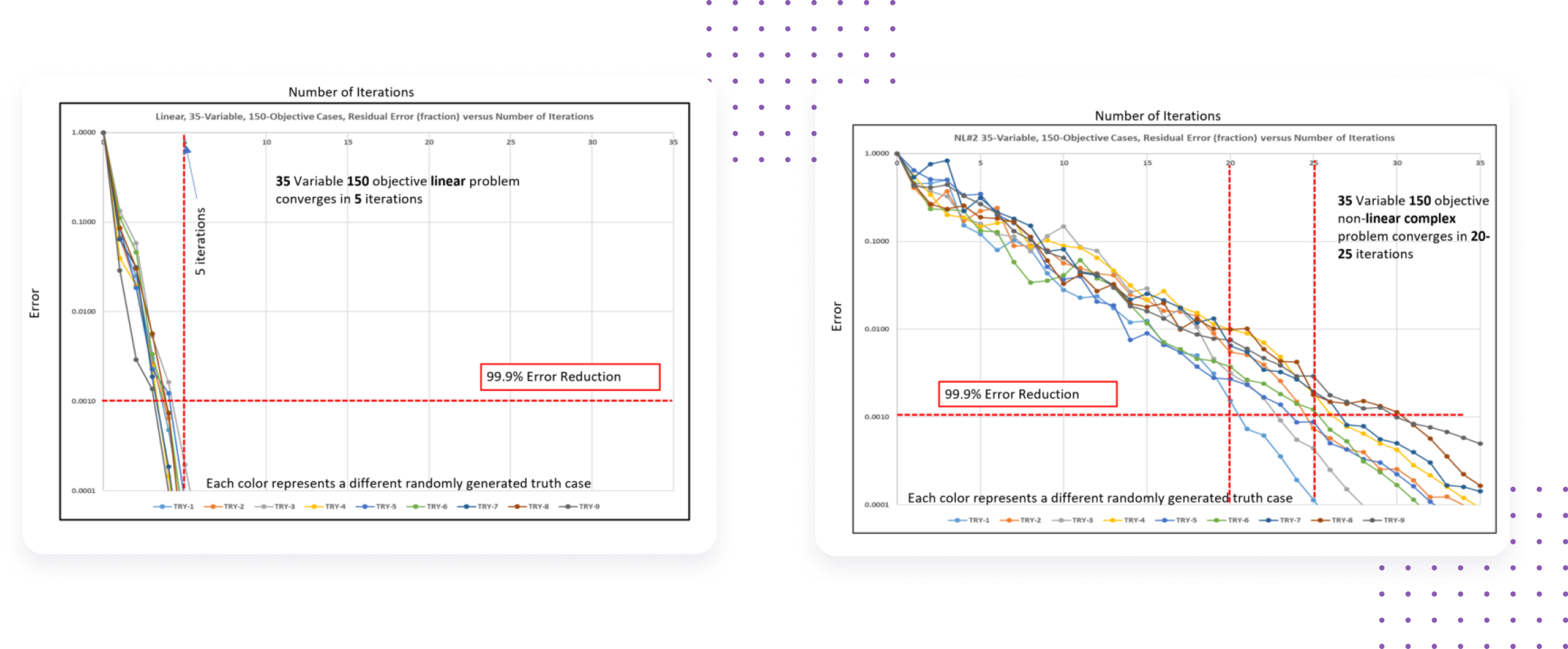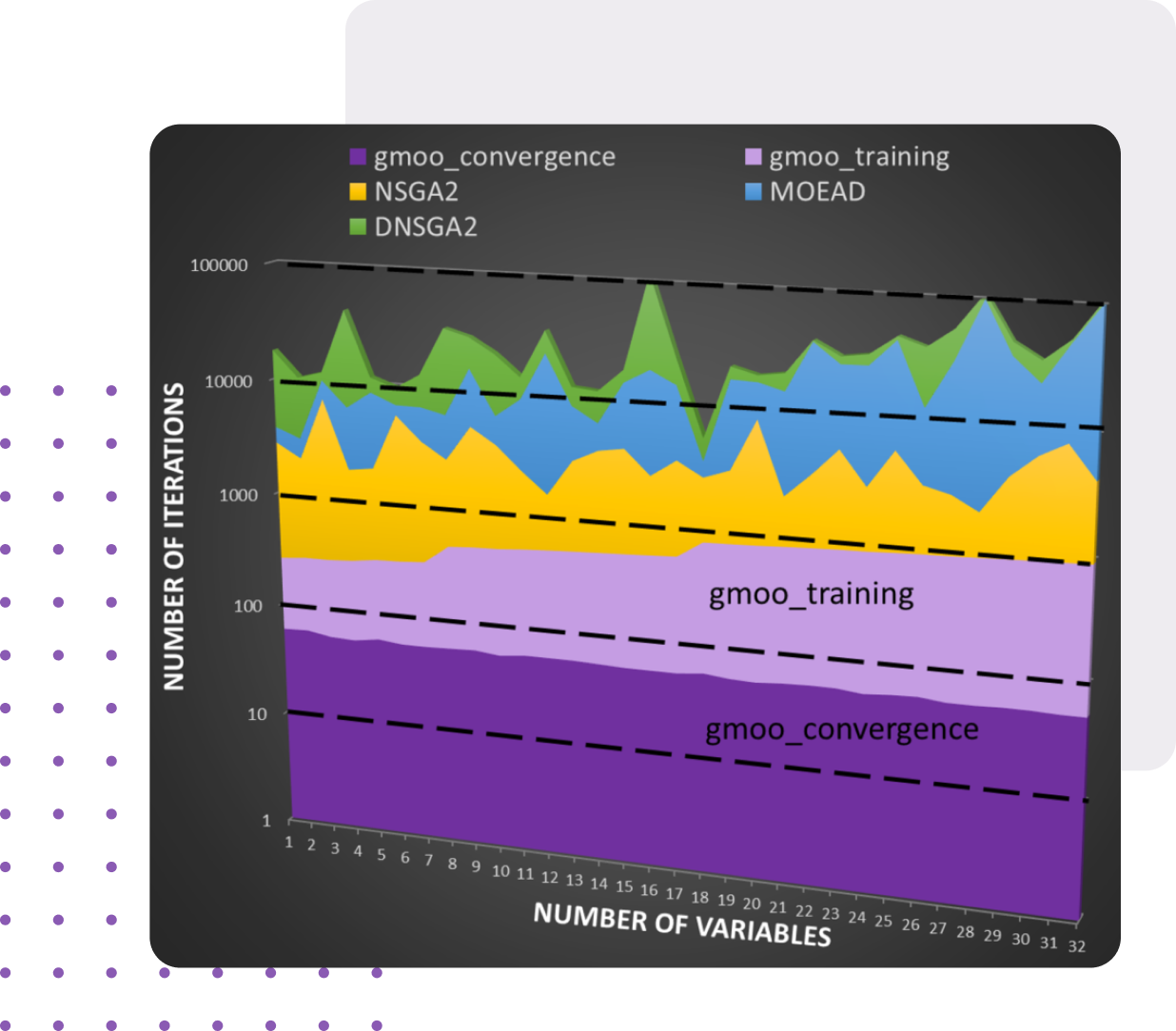A Breakthrough in Multi-Objective Optimization and Complex Problem Solving
Why globalMOO? A Technical Overview
globalMOO is a breakthrough technology for multi-objective optimization and the efficient solution of inverse problems. We explain why globalMOO is needed, what it is, and where it is applicable.
Why is globalMOO Needed?
There are many available numerical approaches to solve the inverse of a forward model with one single output value. However, there are no existing methods that efficiently compute the optimal inverse solution given multiple objectives.
There are three classes of existing solution that are commonly applied to multi-objective inverse problems:
- Approaches which rely on heuristic methods which are carefully tailored to a specific problem description.
- Approaches using scalarization of the objective vector, lumping multiple outputs into one aggregated proxy output via loss function which is then solved for. These approaches fundamentally transform the problem space, resulting in biased solutions which do not represent multidimensional trade-offs among objectives.
- Evolutionary algorithms oriented around Pareto-optimal search and selection. These methods do truly solve for multiple simultaneous objectives but require astronomical compute resources and excessive numbers of model evaluations for larger problem sizes.
globalMOO solves for multiple objectives efficiently, even if the objectives are in different units and scales, without requiring human intervention. globalMOO can extend to hundreds of input variables and thousands of objectives without imposing unreasonable compute requirements.
These capabilities differentiate globalMOO from all existing approaches. Real-world problems in business, science, engineering and operations always present multiple outcomes and objectives to simultaneously balance and resolve, and these problems often must be solved quickly and reliably.
For example, given a macroeconomic simulator as the forward model, a change in interest rate by a central bank (forward model input) impacts unemployment, inflation, liquidity, production, investment, trade, and exchange rates (forward model output), which happen to be in different units. Failing to understand the impacts of decisions on all relevant outcomes often leads to undesirable negative impacts.
What is globalMOO and what does it do?
globalMOO is an expert system that captures knowledge related to a software algorithm and uses that information for the inverse solution of that algorithm. globalMOO is model agnostic. It works with physics based and machine learning based models, and with any other forward model possessing particular properties.
The inverse solution of a forward model takes place when the output values are specified (objectives) and the corresponding input values that will give rise to those objectives are back-calculated. globalMOO technology specializes in the inverse solution of forward models, especially when there are multiple objectives.
The precisely calculated knowledge capture in globalMOO leads to understanding of the cause-and-effect relationships inherent in the forward model. globalMOO uses that knowledge to decide on how to take the next step in the inverse solution process.

Where is globalMOO applicable?
globalMOO can be applied to any algorithm, be it a spreadsheet, physics-based simulator, system of analytical equations, or AI-based regression/correlation model.
The use of globalMOO imposes few limitations on what algorithms are compatible, requiring only that the algorithm possess the following properties:
- The input variables and outputs/objectives must be continuous, integer, logical or categorical in type, or any combination thereof.
- Outputs must be precisely, i.e. non-stochastically, computed from inputs.
- The forward model must be causally closed and input-complete. In other words, outputs do not depend on any varying inputs that are not included in the specified input variables.


Other methods tend to be more restrictive in the requirements imposed on the forward model, but globalMOO sidesteps many of these issues:
- While there must exist some measurable impact of the input variables upon the output variables for globalMOO to find a valid solution for those variables, globalMOO can detect which outputs are totally insensitive to the inputs and allow the user to re-scope the problem such that these variables or variable-ranges are excluded.
- Uniqueness of the forward model is not required, and in fact globalMOO can find multiple nonunique solutions for a given set of outcomes, permitting the user to better understand and characterize the nonuniqueness of their application.
- The forward model need not be continuous or differentiable.
- A typical requirement is the existence of valid forward-model solutions for every part of the search space. globalMOO requires that valid forward-model solutions exist in at least 90% of the search space.
Inverse solution through globalMOO has two general applications for forward models.
- Optimization: All forward models can be inversely solved to match, minimize and/or maximize multiple objectives, assisting in optimal decisions.
- Calculation of impact factor: Multiple globalMOO inverse solutions can be used to quantify the impact factor of input variables upon outcomes. This is analogous to calculating the bias of the algorithm with respect to each variable.

Unlocking Engineering Excellence with globalMOO's Advanced Optimization Solutions
Core Algorithm and Technology
Data-Efficient Algorithm

API and SDK

Computational Scalability and Performance

INVERSE SOLUTIONS
Pinpoints Global Optimum
AI Alignment and Bias Mitigation
Redefining Multi-Objective Optimization Across Industries
Benchmarking
Multi-Objective Optimization Comparisons
globalMOO Outperforms Competitors in Efficiency and Speed Across All Tests
We compared globalMOO capabilities with other available solutions. In every test globalMOO beats the competitor in convergence speed and efficiency. The globalMOO efficiency improves as the number of input variable and/or objectives increase. Below is a comparison of globalMOO solution efficiency with MOED, DNSGA2 and NSGA2 algorithms for different number of input variables.

Comparing up to 32 Input Variables
In this example, up to 32 input variables with various output parameters were compared. The scale of the plot is logarithmic and and each dashed line represents an order of magnitude increase in iterations (or run time). For various sample problems MOEAD, DNSGA2 need up to 100,000 iterations to solve a 30 variable problem. globalMOO requires less than 100 iterations for optimization, using up to 1000 training cases. This means, once the training is complete, it can be used for achieving other targets and objectives with less than 100 iterations. That’s 1000 times fewer iterations than over available solutions.